One of the interesting – one of the telling – things about EVs is they’re not designed to be efficient. In fact, they are designed very specifically to be the opposite.
For the sake of something else.
Consider the EVs that serve as the role models for almost all other EVs. Tesla EVs. Every model ever made by Tesla emphasizes inefficiency for the sake of performance, which has been Tesla’s main “sell” since the company first began converting Lotus high-performance cars into electric cars some 15 years go.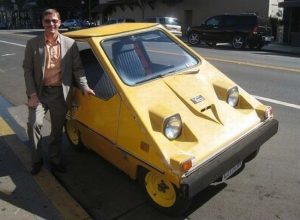
The argument put forward – then and now – was that few people (not enough to make it profitable to build them) would be interested in an efficient electric car. Such a car would of necessity need to be small, light – and slow.
At least, if the thing were to also be affordable.
Of course, it was not put quite that way. But that’s what was meant when Tesla – when Elon Musk – decided to focus on making a quick (and expensive) rather than efficient EV.
But what does that tell us about EVs? And what does it tell us about the frantically alleged “climate crisis” that is the impetus-justification for pushing them on people?
It tells us, first of all, that efficient EVs would probably not find many takers – even with subsidies – because they would be slow and expensive. In part because the government has made it almost impossible to build a light vehicle of any kind – in the name of “safety.” (And this tells us something about how much the government believes the “climate” is “changing.”)
A fine example that supports the argument above is Nissan’s Leaf, which is the only EV sold so far that does not emphasize how quick it is. Which is why it’s less expensive . . . than other EVs. But it is still a great deal more expensive than other slow-but-efficient economy cars, which probably accounts for why Nissan hasn’t been able to sell very many – and those it has, at a loss.
And that is why Nissan has decided to pull the plug on the Leaf.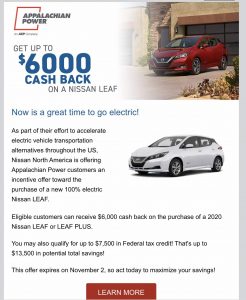
Interestingly, the Leaf’s replacement – the Ariya – does not emphasis efficiency and so is much more expensive than the Leaf, with a base price of $43,190 (vs. $28,040 for the Leaf). The Ariya can get to 60 in 5 seconds. For which you pay, in the form of a best-case range of just 216 miles. It does not go very far because it has the capability to go very quickly, which is why it weighs in excess of 4,300 pounds before the driver gets behind the wheel.
This compact-sized electric crossover is 182.9 inches long, which means it has about the same size footprint as a Toyota Corolla – yet it weighs only slightly less than a current half-ton pick-up truck such as the Chevy Silverado 1500 (4,740 lbs) on account of the 1,000-plus pounds of battery pack it carries, not for the sake of efficiency but to be capable of getting to 60 in 5 seconds.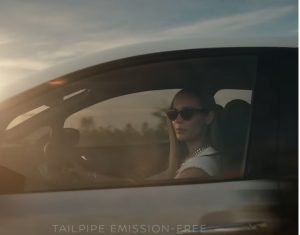
This is necessary, again, because otherwise not many people would be interested in buying the Ariya. Just as few people would be interested in a Tesla – or any other EV – that took 10 seconds (or longer) to get to 60 for the sake of efficiency.
Like a Prius, say.
But the Prius (which is a hybrid) does sell well – because while it’s slow in order to be efficient, it is also affordable. These are three attributes EVs lack and it is why Musk understandably focused on performance (and “tech”) instead – and so has everyone else selling the EVs the government is doing its damndest to force us all to buy. Both understand that slowness isn’t sexy.
And it is very hard to sell when it’s expensive.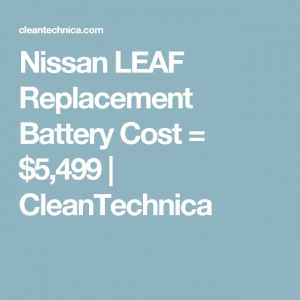
But that circles us back to the impetus-justification for EVs, that it is necessary – in an existential threat kind-of-way – to get people into them and out of vehicles that aren’t . . . because the “climate” is “changing” and this change will prevent the former change. But if this is so, then why the emphasis upon performance rather than efficiency?
Put another – firmer – way: Why the pass given for the gratuitously inefficient?
It is not merely wasteful to build 4,300-plus pound EVs that lug around 1,000-plus pounds of batteries in order to be capable of performing in ways no one needs – to turn around one of the authoritarian collectivists’ favorite shame-words and point it directly back at them.
As of electricity, excessively – as defined by the fact that no one needs a vehicle that can get to 60 in 5 seconds (or less than 3 – as Tesla proudly touts). Probably at least twice as much electricity must be generated than is . . . necessary, in order to power up EVs capable of getting to 60 in less than 5 seconds, as opposed to efficient ones that took twice as long but used half as much.
Ah, but then we circle back to the problem of most people not being interested in paying more for that.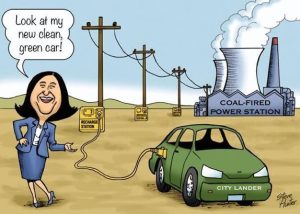
Specifically, affluent Leftist people. Who don’t buy EVs because they are efficient. They buy them because they are quick – so that they do not have to suffer being slow.
But – aha! – does this not prove they do not really care about the “climate” “changing”? Or at least, aren’t willing to sacrifice – another favored term of the authoritarian Left collective – for the sake of salving the “change” they insist is such an existential threat they cannot do without a 4,300-plus pound (and $43k-plus) EV that can get to 60 in five seconds or less?
And why doesn’t the government seem to care that EVs are being designed to be inefficient for the sake of appealing to affluent Leftists . . . if the “climate” is in “crisis”?
Well, you tell me!
. . .
If you like what you’ve found here please consider supporting EPautos.
We depend on you to keep the wheels turning!
Our donate button is here.
If you prefer not to use PayPal, our mailing address is:
EPautos
721 Hummingbird Lane SE
Copper Hill, VA 24079
PS: Get an EPautos magnet or sticker or coaster in return for a $20 or more one-time donation or a $10 or more monthly recurring donation. (Please be sure to tell us you want a magnet or sticker or coaster – and also, provide an address, so we know where to mail the thing!)
My eBook about car buying (new and used) is also available for your favorite price – free! Click here. If that fails, email me at EPeters952@yahoo.com and I will send you a copy directly!


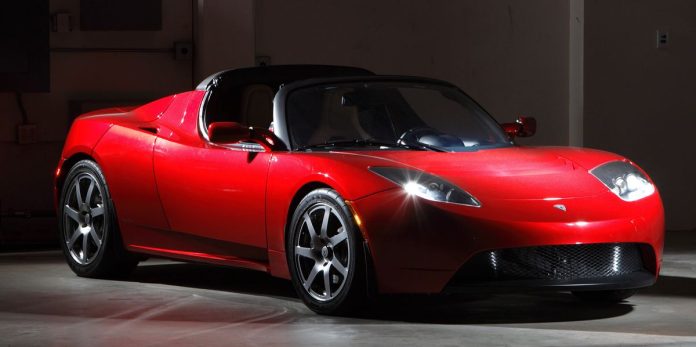

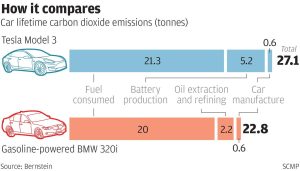








The simple fact is, EVs have been around, and widely available, since the year 1832.
For 200 years, the choice has been there. For 200 years, the world over, everyone everywhere has chosen something else.
Not new technology. No breakthroughs are coming to save you. No new batteries. EVs simply always have been, and always will be found wanting, by people who need to efficiently get things done.
What you are left with is the Reverend Jim Jones, and electric vehicles as a cult, to siphon money from the gullible.
Did ya’s see? The EU has already abandoned it’s All electric/no ICE cars by 2035 agenda? Only now they’re pushing something almost as silly- ‘transitioning’ to “synthetic fuels” only…
It never ends…..
But at least this signals the death-knell for EVs. Expect the same here soon. I guess the R-party tyrants will win the next election, because it wouldn’t look good for the D-party to be the ones to end the EV insanity. Of course, we can expect them to play it up like :Oh, look at what the R’s are doing for us!”.
But at least the EV insanity will likely stop- just hope whatever replaces it isn’t as bad..or worse!
Hiya Nunz!
Yeah I saw that too, some genius finally realized you can’t increase the electrical load while simultaneously decreasing generation. Tough charging EeeVeees overnight with solar panels 😆. This country is on the same trajectory, curious to see how it plays out here.
The excessive acceleration is commonly used to cut people off in traffic. Just another obnoxious tool in the tool chest of the self-obsessed, wealthy class. Interestingly, a body shop near my wife’s job has damaged Teslas literally stacked up in its holding yard.
It’s a joke; they needed to be aspirational because the whole thing is cart before horse. We can’t have nice things, despite having the technology for ultra low fuel consumption and emissions.
Watching a Munro video about Tesla presentation I found it really interesting when he talked about how big of a deal switching from 12V to 48V would be in terms of weight reduction. Great, I still neither want or need.
Your attempt to argue against Leftist Ideology is admirable and logical, however, as one commentor on a JP Sears’ video stated, “Arguing with a leftist is like playing chess with a pigeon. You move, it knocks over the pieces, shits all over the board, then struts around like it won.”
Hi Gwyneth,
Absolutely. But my object is not to persuade Leftists; it is to alert people to what Leftists are (and are doing).
Your attempt to argue against Leftist Ideaology is admirable and logical, however, as one commentor on a JP Sears’ video said, “Arguing with a leftist is like playing chess with a pigeon. You move, it knocks over the pieces, shits all over the board, then struts around like it won.”
If the people pushing EV’s and “mobility as a solution” were serious, we would see the national railroad infrastructure being built out rather than torn out and decommissioned. Out here on the tundra our railroad lines are in severe disrepair and disappearing, rails and ties being pulled up and salvaged.
Railroad freight with the last 50 miles in an electric truck might possibly actually have a chance of working. And who cares if your electric “lorry” trundles along at 30mph from the railroad siding to the local Whatever-Mart.
If electrification made sense, Fedex, UPS, and the USPS would all be doing it. They know it is at best a niche solution. They might even know it’s a niche solution to a nonexistent problem.
Electrifying everything on the highway is not even a bad joke, it is a monstrous crime against humanity and the environment.
Went up on top of the Grand Mesa yesterday. I wanted to see what 400 inches of snow looked like up close. CDOT had route 65 open at least one lane after multiple avalanches all last week. Oncoming traffic was pretty sketchy because there wasn’t anywhere to go with 10 foot snow walls on the sides. On the way up I check the rear view and see a Tesla Model S on my tail. First opening, there they go flying past, taking advantage of all that ludicrous speed. Whatever, I was 5 over the PSL and happy enough. Up on top the dash thermometer showed it was a balmy 8º F (-13°C), at 3:00 in the afternoon. I’d expect that in late December, but for March that’s pretty cold, even at 10,000 ft. After a quick walk around I was grateful for the 75º air coming out of the vents. Can’t imagine having to choose between warm or range, especially when the nearest charging station is down in Grand Junction, 60 miles away.
I couldn’t think of a more impractical vehicle for that environment. Even if it had the “twin motor,” that low ground clearance and those low resistance tires aren’t going to do squat in deep snow. Coming out of a parking lot a Taco was pulling in. I easily yielded by pulling up on to a drift, because I could. No drama, no issue just a friendly wave exchanged and move on.
California also has huge snow walls on the passes, snowpack is now 225% over the long term average, with more on the way.
Twitter Colin McCarthy
@US_Stormwatch
California is about to have its largest snowpack in recorded history with another atmospheric river arriving tomorrow expected to bring 2-4 feet more snow.
https://twitter.com/US_Stormwatch
https://twitter.com/US_Stormwatch/status/1640551543933132800?cxt=HHwWgIDTvf27tMQtAAAA
I am in SW Oregon and it is freezing ass cold, and fresh snow everyday in the mountains. Never seen it like this before, this late in the season.
‘a balmy 8º F (-13°C), at 3:00 in the afternoon. I’d expect that in late December, but for March that’s pretty cold, even at 10,000 ft.’ — ReadyKilowatt
Even in the more southern climes of mountainous Arizona, a chill hangs in the air on the continuing below-freezing nights.
Copious rains have produced a wanton profusion of wildflowers in the Salt River Valley east of Phoenix, luring maidens in long white dresses to pose for photos in luxuriant fields of green grass, orange poppies and purple flowers studded with saguaros.
LOL If only! These days you’d better check those maidens to make sure they have the right equipment!
This is probably a pattern similar to the one that caused the canal breech that created Salton Sea. A few years later the midwest went through the dust bowl. But we’ll never know because meteorological data from that time, especially out here in the frontier, was scarce and inaccurate. As Drumphish points out we’re deep into Solar Cycle 25. In the 1920s man was just starting to understand old Sol, and knew nothing about the atmosphere above 15,000 feet or so.
I caught a old film promoting Las Vegas and the Desert Inn. They had a segment about Lake Mead and sure enough, there’s a “bathtub ring” around the edge. This was in the 1950s or so, so the dam was still shiny and new and probably had just filled enough to produce power a few years prior.
https://youtu.be/5PKP5v3mQ3I
There is Climate Change because climates change. Solar Cycle 25 is missing some heat these days. That CME on the opposite side of the sun produced some heat waves. Could have used them here on earth.
In 1946 on March 27 the record temp was a daytime high of 78 degrees F.
Today’s high temp at my locale in 17 degrees Fahrenheit. One of the coldest Marches ever, hands down. Going to be a low of zero degrees F, Old Man Winter is mistreating Mother Nature.
Continental climates can vary that much.
Antarctica is a Köppen climate classification EF, continental polar climate, eternal winter. It’s an ice age down there and the ice pack around the continent has grown.
Ship dead 1000 pound lithium batteries to Antarctica, they’ll eventually auto-immolate and finally warm up the place.
There are 3 factors in buying a vehicle
Performance
Efficiency
Utility
You always sacrifice two of these for the feature you want
Part of efficiency is efficiency of sales price, otherwise what are you economizing?
There is, of course, also style. My Willys Jeepster scores highest on that and I wouldnt trade it for anything. I would contend that this is actually one of the more influential factors in buying a vehicle.
This is an interesting read, the Nissan Leaf vs. Mitsubishi MiEV, vs. Ford Fiesta EcoBoost:
https://www.extremetech.com/cars/142441-mitsubishi-miev-hands-on-review-the-most-efficient-clown-car-in-the-us
“No matter what quirks the Mitsubishi MiEV has, there is this: It is the most energy-efficient car available. The EPA rates it at 112 MPGe, meaning the energy in a gallon of gasoline, converted to the energy in electricity, would take you 112 miles. The EPA’s 62-mile range rating means it’s carrying the equivalent of a half-gallon of gas.) A gallon of gas now costs $3.40 (early December 2012), yielding a cost equivalent of 3 cents per mile driven in the Mitsubishi i. The super-efficient, 40 mpg (estimated overall) 2014 Ford Fiesta EcoBoost three-cylinder I just tested will likely be the most fuel-efficient non-hybrid or EV, and it will cost 8.5 cents per mile for the fuel.
And then there’s the price: The Ford Fiesta will sell for half ($15,000-$16,000) as much as the Mitsubishi, whose models run $29,975 (ES) and $31,975 (SE) including shipping. Mitsubishi translates that to “as low as $21,625″ after you collect a $7,500 tax credit, $22,275 if you include shipping, plus $1,000-$1,500 for a 240-volt charger installed. You’d make the difference over the Fiesta somewhere on the high side of 125,000 miles, which is a lot of miles in a small electric city car. ”
——————-
Used Geo Metro, $500 – $2000, 45-55 mpg, battery $54 at Walmart, parts for cheap on Amazon, easiest car to work on, range 10.6 gallons x 50 = 500 miles, doesn’t look any worse than the Leaf or the Miev or the Prius.
Cost to register and license, far less than a new car.
Insurance – far less than a new car
Upfront capital cost, far less, and no interest payments for 5-7 years.
Depreciation = nil
Thus, the little ole Geo Metro beats them all hands down. And the Metro can be fixed cost efffectively for ever, while the electrics and hybrids go to the crusher.
Now that is some real eco green math for all them libtards out there.
Too bad they don’t sell it anymore. The Geo had a lot of upside.
The last Geo Metro came off the CAMI assembly line in 2001, later years they carried the Chevy badge. The plant was taken to Pakistan??? where they still make them, but in “free” Amerika you can not buy them, even though the entire car is identical.
https://buysellsearch.com/vehicles/cars/mk-geo/ml-metro/yr-1993
My Golf TDI gets me consistently 44mpg, with the manual trans it would be higher yet. Perhaps not quite as cheap per mile, but this old gal is comfortable and long legged, comfortable and capable for very long highway trips.
And best of all, it can run on anything oily, so I’m not pegged to refinery infrastructure.
That one factor makes a mechanical diesel worth it.
I wish I had one, the quality is much better and I have heard the engines go forever.
As I’ve said before, the high cost and low efficiency of EVs means that you won’t buy and own then outright, whether by cash or financing. You’ll lease them at best, and will more likely use them as part of a “subscription” plan or Mobility-As-A-Service. You know, “you’ll own nothing and be happy.” (Never mind that having or lacking control over one’s environment is a key factor in one’s happiness or misery. But I digress.)
The goal is for the masses to get their mobility through Mobility-As-A-Service so that they are easy to control.
Here’s an example. Suppose that there’s a political rally in your city’s “town square” that TPTB take issue with. If you wish to attend it, and summon a ride to said town square, said ride may: 1) simply not be available take you to the town square; 2) take you there, but report you to the authorities; 3) take you somewhere else, like the city jail; 4) suspend your service for violating the terms and conditions.
Another example is during an “emergency” which can mean everything from a blizzard or hurricane to a disease outbreak to a “bad air quality day.”
But the wealthy and well-connected won’t have to worry about these problems. They will have access to vehicles that they control, no matter how inefficient. They won’t be affected by the regulatory ayatollahs and their fatwas in their ZILs and Chaikas, and the AGWs’ MVD and SD agencies will have their Volgas.
That, folks, is the real idea behind EVs.
I don’t like the tone of this at all.
From the Wall Street Journal:
‘Fossil fuels are essentially underwriting Ford’s green business”
“Ford said it will keep investing in EVs and expects to reach an operating-profit margin of 8% by the end of 2026. That will require dramatic changes in consumer tastes”
“Ford can sustain losses on EVs in part because it is benefiting, directly or indirectly, from subsidies up and down the EV supply, production and service chain: battery production, sales to consumers, charging stations and more. The entire point of last year’s Inflation Reduction Act is to make EV production too big to fail. If consumers don’t want to buy EVs, for whatever reason, the government will keep subsidizing or mandating EVs until they do.”
https://archive.ph/cE8Rh
You WILL eat your peas, little boy… ALL of them.
Hi X,
Nor I.
It is clear to me these bastards are going to push non-EVs off the road, to make way for the EVs they are pushing on us.As most people cannot afford an EV – and for many, an EV is unsuitable, if not useless – people will be forced out of cars and thereby into the “15 minute cities” these bastards have in mind for us.
But not for them, of course.
They will own/enjoy the depopulated countryside, largely emptied of the vermin – that is, of us. I’ll die on this hill, if need be.
Yep.
Translation: YOU peasants can move back into Detroit and ride an electric government bus with the hoodrats.
THEY’LL still be up in Grosse Pointe at the yacht club…
The EV song:
https://youtube.com/watch?v=-qgpewMCVjs&feature=shares
Either be forced to drive an EV, Eric, or you will be “allowed” to keep your gas powered vehicle. But told, “sorry, there are no more gas stations anymore, only EV charging stations. Wave of the future, you understand”. One way or another, they are going to force feed the EV sh** down our throats, whether we like it or not.
Hi Shadow,
I am certain they plan to try. If they succeed, it’s time for this clown to exit, stage left. When the situation becomes intolerable, it’s 50 acres and a homestead in the middle-of-nowhere time.
There is this Austrian engineering firm https://www.obrist.at/powertrain/ that had the sacrilegious audacity to take most of the batteries out of a model 3 and add **gasp** a small generator. They are using just one electric motor for the rear wheels so there is no ludicrous speed. What they came up with is a series hybrid that purportedly gets around ~ 115mpg. After listening to this interview https://www.youtube.com/watch?v=kgZnF8_C4B4 I’m asking myself, why aren’t more manufacturers attempting this? No doubt this is as you say by design. Frankly speaking, batteries suck.
Hi Frontiersman,
Yup. Because the object isn’t to make something better – or even something that works. It is to get most people priced out of cars.
The article is fear porn. Taxpayers cannot sustain everything. As Margaret Thatcher accurately stated, “The problem with socialism is eventually you run out of other peoples’ money.” She also stated, “The government has no money of its own. It’s all your money.” A brilliant woman, that Maggie. I wish the world had a few more like her.
Government promises a lot and always delivers very little. Someone will be holding their crumbled, bankrupt company with no handouts forthcoming when this EV Ponzi scheme goes kaput.
Usually on this site we have a tendency to associate real life with Hollywood productions…1984, Soylent Green, Demolition Man, etc. I like to add Cars 2 to the mix. Yes, the cartoon, Cars, with Owen Wilson and Larry the Cable Guy. Two words. Miles Axelrod.
As I have stated before the oil barons will not take a back seat (pun intended) to alternative fuels. What shareholder is making more money now? Exxon or Tesla? Chevron or Nio?
When was the last time you saw Exxon advertise anything? They don’t. Why? Because when one is making money they don’t need to. The push (and marketing) for EVs is ridiculous. Because they aren’t selling. ICEs aren’t going anywhere. This is nothing more than more large commercial and government propaganda that they will FUBAR. Hold onto to your gasoline powered autos and grab some popcorn. It will be over with soon.
“Cars 2”. Bruce Campbell as Rod Redline, a Dodge Challenger IIRC, who gets tortured and blown up by the “Lemon” forces. How prescient! 🙂
“The Ariya can get to 60 in 5 seconds. For which you pay, in the form of a best-case range of just 216 miles.”
The Ariya has a bigger battery option that amazingly isn’t tied to that faster AWD option, so you can actually order one that claims 304 miles with the bigger battery and FWD (0-60 is like 8 seconds). That’s probably only like 250 on the highway, but it’s still something.
People just don’t care about efficiency, and small cars don’t make enough profit for the automakers.
As I was reading this excellent post…..I had a flash back to another technological fad….WATCHES.
Remember this
https://i.ebayimg.com/images/g/4oUAAOSwYXFcrOJw/s-l1600.jpg
I had one when they were the latest thing, exactly like a modern EEEEVVVV, big, heavy EXPENSIVE and not very practical. The Playboy ads made them look so cool, but you had to push a button to tell the time. After a few months I wised up and bought a Seiko with a numbered dial. I am certain Tesla and their clones will follow the same trajectory.
I remember those, David!
Perspective is one of the perks of being viejo!
In Scotland the wind turbines have to move so the bearings don’t mash and flatten, diesel generators are stationed near wind turbines to turn the blades when there is no wind.
Just use the diesel generator to generate electricity for x number of houses and you won’t need a useless wind turbine that costs 3,500,000 dollars.
Kind of inefficient, doesn’t matter, it still pays.
Build an EV charging station at the diesel generator location, you get a two-fer.
Make it even more inefficient.
Negative efficiency, in-efficacious and also a negative hedonic.
None of it matters as long as it pays.
“because otherwise not many people would be interested in buying the Ariya”
Not too many are interested, or can afford to buy ANY US EV. They are expensive, short lived, and only practical in city driving, not suburb or rural driving. Batteries have ALWAYS been heavy. So heavy that older Miatas put them in the trunk to help balance front to rear weight ratios. Until completely and radically new battery tech becomes real, they will be a hobby, not a practical means of transportation. I see no sign of such on the horizon. But I digress, the real reason for them is not to sell them, but to prevent you from buying a car, any kind of car.
They’re psychopaths, and revel in the pain of others.
Last I heard, EV sales were still under 10% of the market.
Hi John,
It’s actually a lot less. About 6 percent. Most of that in warm cities, such as LA.
So how do the automakers think they will stay afloat with a market reduced by 90+%?
I wish I knew, John!
I suspect they haven’t thought that far out. They may also be smoking their own hopium as regards battery “breakthroughs.” But I imagine they think they can make money selling “transportation as a service,” as opposed to selling cars.
The neck snapping acceleration isn’t much use around here or many other urban/suburban areas. You only need to go 0 to 35 to get onto most highways unless you’re traveling at 3 AM 😆
Hi MIke,
Yup! And I think part of the reason for the fanboi-ism is that many of the fanbois who own EVs drive them in the city, slowly. So they don’t see the range plummet – and therefore it doesn’t matter to them.
You mentioned that most EEEEVVVVs sell in warm climates ie California…the one place you do need quick acceleration….Interstate 405. You should check out his guys videos, Casey Putsch shares an article about Electric Vehicles, I think you would get along.
https://www.youtube.com/watch?v=eBfAh842U3Q&t=39s
Anyone remember the Corbin Sparrow? It failed, twice.
https://en.wikipedia.org/wiki/Myers_Motors_NmG
I had a friend in Blacksburg who had one in 1998. Even though it was full enclosed with doors, roof, & windshield, Virginia refused to title them as automobiles. VA DMV titled the Sparrow as a motorcycle, and likewise required any occupants to wear a helmet.
I doubt that anything built in/for Europe or Asia would meet the “saaaaaafteeeeeee” standards in the U.S., so all we will ever have is civilian “tanks”, no matter the propulsion method applied.
The Nissan Ariya ads with Brie Larson — Captain Marvel in Disney’s M “She” U film series — are not selling EVs as much as female empowerment.
Nissan may have to rethink the ads, however, since “The Marvels” got pushed back into next year.
This is a good article because it shows that the high cost of EVs is a serious problem that is not being addresses. Unfortunately, the variable cost savings from using a smaller electric motor is too small to give away the one selling point besides CO2 virtue signaling: Fast acceleration. Smaller motors would make only a small difference in the MSRP. The engineers working on EVs have already proposed that and it was rejected by management.
The main EV problem is the battery weight and inconvenient recharging
The motors themselves are great.
The high battery weight suggests the need for a small, light structure
that would be a sub-compact. they have not sold well outside of China — glorified golf carts that will not pass US crash tests..
The best auto efficiency would be from a small diesel engine or a hybrid vehicle, not an EV in the size, and with the range, that people want to buy.
It is true that an EV with a bigger engine can result in the driver wasting a lot of electricity to accelerate fast. But that would be the driver’s choice.
The 2026 model EPA CAFE 49mpg requirement is forcing a lot of the EV sales. The current fines for not meeting 49mpg for ICE 24mpg pickup trucks, for example, are not huge — they would still be profitable vehicles with the fines. But the auto manufacturer CEOs will not accept the potentially very bad publicity if their company is far from meeting the 49mpg CAFE rule. Or risk higher CAFE fines in the future.
Engineers working on 2026 model EVs closed 2022 being pessimistic about their future products affordability and performance. They only were happy with the acceleration, which was at least one thrill. Many engineers were imagining their company could go bankrupt in a few years. The recent Ford EV loss is what they were predicting.
This is the only place where the EV reviews seem fair and balanced. Other EV testers seem like EV cheerleaders. I wonder if they even drive the EVs long enough to need a recharge?
My source doe information on the cost of EV motors was an electrical engineer who retired at the end of 2022, after years of working on EVs. He could not provide the exact cost of the motors, but claimed the cost reduction of a smaller motore was not enough to give away the fast acceleration selling point that males especially liked.
if anyone can come up with significant cost reductions for EVs, the engineers working on EVs are desperate. The EVs are much less convenient than ICEs when “refueling” and cost a lot more. You don’t have to be an auto engineer to realize that is not what many customers want.
To extend the life of your expensive batteries, engineers suggest keeping the charge level from 10% to 80%. That reduces your range by 30 percentage points. In extreme cold, as in Northern Minnesota in December 2022, a variety of EVs had range reductions of 40% to 60%, which was more than expected. Subtract 30 percentage points to preserve the batteries, and then reduce that by 50%, and your range in very cold weather is down to 35% of the advertised maximum range. I don’t read that in any EV reviews.
In my 27 years in product development, I saw engineers consistently over-optimistic about ICE products they were working on. A few months ago, I commented that engineers were pessimistic about EVs they were working on now, which was unprecedented. The resent news about Ford losing money on EVs has made the engineers more pessimistic. They did not know the bottom line effect of EVs but had suspected it would be bad news. Now the imagined bad news is real.
These are not the products that many Americans want to buy, or can afford. And slower acceleration with smaller electric motors won’t solve that problem.
I don’t know how to fix this problem:
Why Chinese EV are not sold in the US?
Even though China has been producing millions of EVs for years, American drivers wouldn’t be able to buy one. It’s because vehicles made in China are subjected to a %27.5 import tariff in the US. Due to heavy taxation, Chinese brands had not prioritized the US auto market in their global plan
Electric vehicles can be imported into the U.S. if they meet FMVSS rules and are manufactured according to American driving specifications. Import standards and certifications are found through the Office of Vehicle Safety Compliance (OVSC), a division of NHTSA. None from China meet the standards.
There aren’t any Chinese automakers directly selling electric vehicles on American soil. However, there is the Polestar brand, which is produced by Volvo, a company purchased by the Chinese automaker Zhejiang Geely Holding Group, according to Capital.com.
Ricard Greene
Bingham Farms. Michigan
https://honestclimatescience.blogspot.com/
“The main EV problem is the battery weight and inconvenient recharging”
And the short life span. Which those who buy one will discover too late.
The battery lifespan will not be “short” unless there is lots of fast charging. and/ or ignoring the 10% to 80% charged recommended range, or an accident that damages the battery case.
The range will gradually decline as the batteries age, but that doesn’t mean a new battery pack will be mandatory before 150,000 miles.
There is not enough field data to state these conclusions with high confidence. Based on past claims about EVs, I suspect claims that batteries will last 100,000 to 200,000 miles, or 15 to 20 years, are exaggerated, but I can’t prove that.
The average of 13,000 miles driven a year times 20 years is 260,000 miles. Not 200,000 miles. So claiming 20 years seems like an exaggeration If you drive, 13,000 miles a year, times 15 years, that’s 195,000 miles.
I know the average EV is driven only about 7,000 miles a year, but that is mainly as a second car. EVs are so expensive they may be the only car a family can afford, and then they will drive it more than 7,000 miles a year.
Claiming a battery will last 15 to 20 years is a very broad claim that can’t possibly be based on enough field data to be a reliable estimate.
“The battery lifespan will not be “short” unless there is lots of fast charging.”
But if people use them as a daily driver, there will be.
On top of that, insurance companies are totaling them after what would be considered minor accidents for ICVs. Because of the fire risk of a damaged battery.
Eric,
I can only tell you what I’ve heard Elon Musk say in interviews from long ago when he just sold the Tesla Roadster and was working on the Model S: he said that he emphasized performance to do away with the stereotype that EVs were glorified golf carts, such as the CitiCar you have pictured in the article. He also said that he started with high end, low volume cars in order to establish the company. He cited the fact that VCRs, cell phones, etc. started out that way, and then became less expensive and proliferated as time went on. I thought that the strategy was smart.
He has said that Tesla is working on a smaller, more affordable EV that’s been dubbed the Model 2. There’s been no announcement of a date though, as Tesla has plenty of projects on its plate, such as the Semi, Cybertruck, and ramping up Model Y production. I think that as batteries and their production techniques are perfected, that EVs will become less expensive, especially if solid state batteries are ever perfected.
BTW, there are slower, less expensive EVs, but they’re not available here. In China, there are many LSEVs (low speed EVs) on the road in their big cities. They do perhaps 40 mph, have similar range, and sell for $10K or less. Thanks to Uncle, they’re not sold here though.
Musk has been promising a cheap EV for over ten years. it is always coming,but never arrives, like the coming climate crisis and coming fusion power.
We’ll see if Musk can even deliver the Cybertruck without disappointing many of the fanboys.
Yes, Y chromosomes. I believe women are too practical to buy what Musk is selling with that vehicle.
Hi Roscoe –
I suspect he will deliver it. Just not many deliveries. Like the electric Hummer. It has nothing to do with their being electric, per se – but rather everything to do with their being too expensive for probably 90 percent of the buyer pool to even consider.
Hi Mark,
It’s a fallacy to compare consumer electronics with electric cars. Because the former don’t need to move. The latter do. In order to move, massive (and massively heavy) battery packs are necessary. These, in turn, require massive quantities of raw materials that are neither easy to get nor inexpensive to get – or manufacture into the finished component (the battery pack). This is why EV prices are going UP – not down. And will continue to do so, absent an entirely new kind of battery/power source.
“Because the former don’t need to move.”
They also don’t weigh two or three tons.
“Why aren’t EVs designed to be efficient?”
A paper about energy efficiency trade-offs in EVs offers this summary:
‘Certified and real-world energy consumption of electric vehicles increase by 60% and 40%, respectively, with each doubling of vehicle mass, but only by 5% with each doubling of rated motor power.’
https://enveurope.springeropen.com/articles/10.1186/s12302-020-00307-8
From this survey-based data, it appears that the design rationale for 1,000-lb batteries primarily is to enhance range, which still remains too low in most EVs.
On the other hand, if doubling the rated motor power only costs an extra 5 percent of energy consumption, then goosing the vehicle’s acceleration by specifying a bigger motor is almost a free benefit.
Stated a different way, if halving the motor power (e.g., for a sedate zero-to-sixty time of 8 or 10 seconds instead of 5 seconds) only saves 5 percent in power consumption, while extending range by a similar 5 percent increment, then snappy acceleration is not what’s driving the heavy batteries; it’s range first and foremost — the Achilles heel of nearly every EeeVee.
Maybe there’s an electric vehicle design textbook that quantifies this trade-off more formally. But I’m not interested enough in EeeVees to purchase a textbook about them. Engineering design of dishwashers, stoves, and even low-flow toilets would be more practical and exciting, I reckon. Does your toilet have a heated seat, comrade?
The EV auto engineers claim the variable cost reduction with smaller motors does not justify giving away the fast acceleration selling point. What else do the EVs have? CO2 virtue signaling, which may not even be true.
My alternative energy nut next door neighbor, who drives a Prius with the license plate OilsGone, needed a new vehicle for the wife after she hit a deer with her old ICE SUV. So he went shopping for an EV. After seeing the prices and finding out that our DTE Energy used 58% coal for electricity, which would make an EV charged here in SE Michigan a 58% coal car, he bought a used Mercedes ICE SUV. A big surprise to me.
Although the range reduction is small if you use a bigger than necessary EV motor, that percentage requires no change in driving habits with the faster accelerating EV.
Based on my own experience driving leased company muscle cars for 20 years, I wasted a lot more gasoline having fun accelerating too fast and getting tickets with my ICE cars, than I did when driving the wife’s slow ICE sedan on our long trips.
It’s possible to own any car that accelerates fast, and then never accelerate fast with that car. But not likely, unless you are stuck in heavy traffic. So I believe the actual range reduction with a larger electric motor is likely to exceed the theoretical 5%.
Richard,
It’s not the motors. It’s the battery packs needed to power them. These add exorbitantly wasteful weight to the vehicle, which is always present even if you never use the acceleration potential of the motors.
The battery packs that die in the middle of the vehicle’s life span.